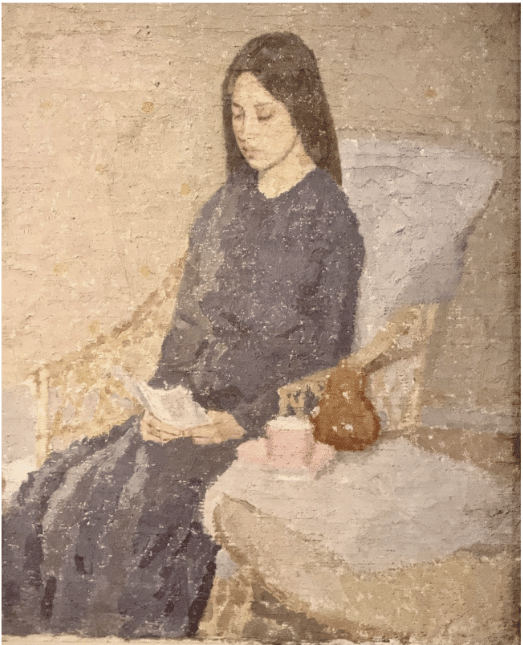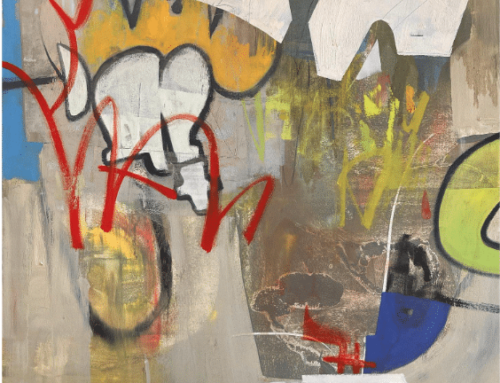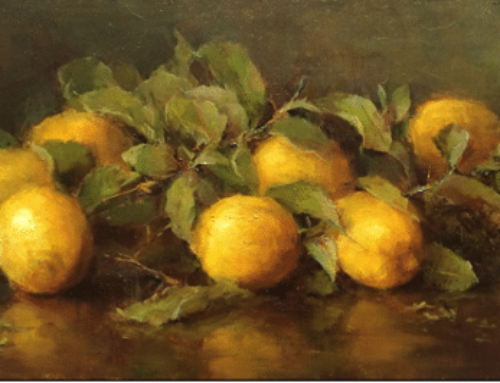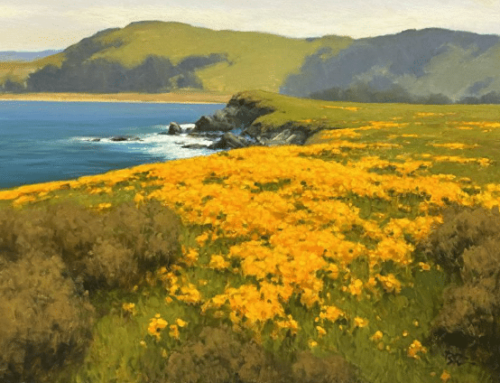The passionate affair lasted only months.
The Great Artist, sculptor August Rodin, found his next model and muse and moved on. But the young woman obsessively in love with him, the painter Gwen John (1876–1939), did not. Instead, she kept up an unending stream of hundreds of passionate letters to her former mentor and lover.
At first, no answer, and later, mostly just to express his worry about her. But that didn’t matter. Gwen’s passion would be her work. And though she lived outwardly a quiet life and died unnoticed and unremembered, scholars in the UK recently reintroduced her and her work with her first, and very well-received, retrospective.
Gwen John was born in a small town in the south of Wales in 1876. When the family moved to the coast, she reveled in the solitude and freedom, painting and sketching among the fields and walking the windswept cliffs overlooking the sea.
She and her younger brother Augustus would both study painting in London, where the flamboyant Augustus began his lifelong habit of overshadowing her career. To his credit, Augusts always readily acknowledged that hers was the greater talent, predicting that, for all his notoriety and success, “fifty years from now I will be remembered as the brother of Gwen John.”
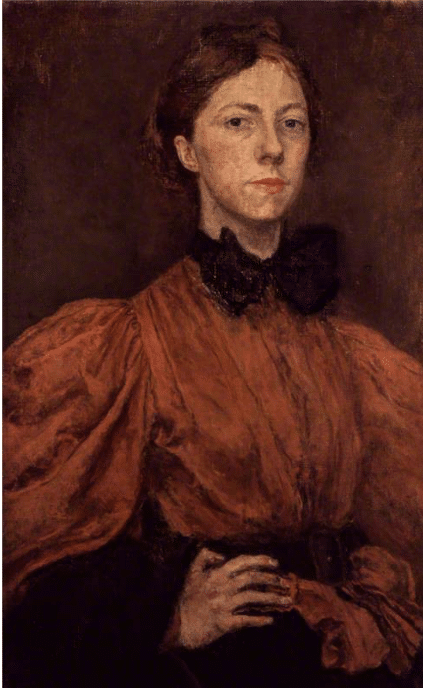
Gwen John, Self Portrait, oil, c. 1900
When Gwen John visited Paris as part of her studies in 1898, she met James McNeill Whistler and not long after had her first exhibition in London. In the summer of 1903, she and her brother’s mistress, Dorelia McNeill, decided to walk to Rome, sleeping in fields and selling portrait sketches on the way. They made it as far as the south of France.
In the many portraits Gwen painted of her traveling companion, the artist probes her subject’s inner life.
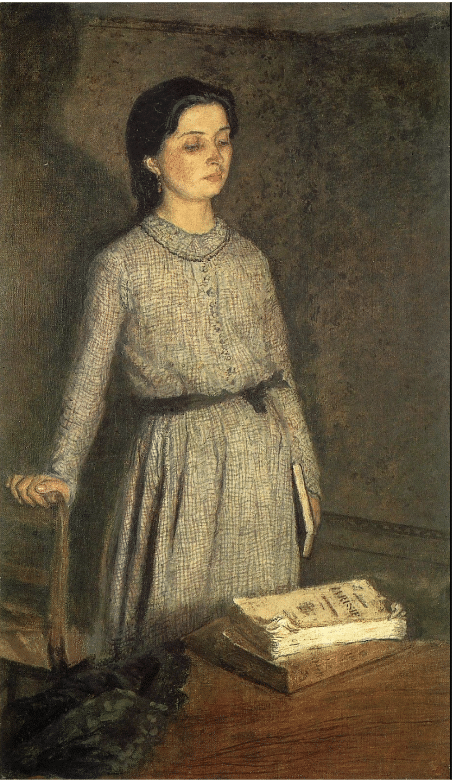
Gwen John, The Student (portrait of Dorelia), 1903/04, oil on canvas, 56,1 x 33,1 cm
Gwen’s treatment of the woman’s posture, combined with the angle of view and her lidded eyes, charges her subject with an introspective intensity. This was to become Gwen John’s signature style. Suspended in a moment of stillness, her subject’s surrounding may be humble, but we sense a richer and much more colorful interior world within.
“I may never have anything to express, except this desire for a more interior life,” Gwen confessed to her notebooks.
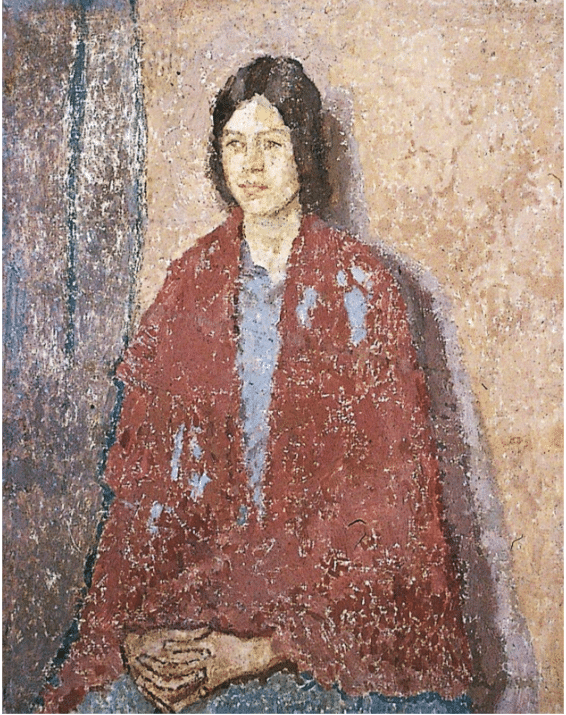
Gwen John, Young Woman in a Red Shawl.
Today Gwen John is famous for her insightful, half-spiritual, half-earthly paintings of solitary women. Her story is often told as that of a recluse with a quirky style, but this narrative is fading. Evidence is piling up that this pupil of Whistler, admirer of Cézanne, and lover of Rodin was ahead of her time.
The quietness present in so much her work is deceptive, if not subversive; behind it throbs a the tension of a passionate spirit. As Gwen John scholar Alicia Foster has said, the artist was “always searching for grandeur. She had that grandeur in her personal life with Rodin, she had it in her art, and eventually she found it in her spiritual life, too.”
Part 2 of “The Quiet Life of Paint” will cover Gwen John’s intense loves, artistic breakthrough, religious conversion and quiet passing from life and memory. Coming soon to Inside Art.
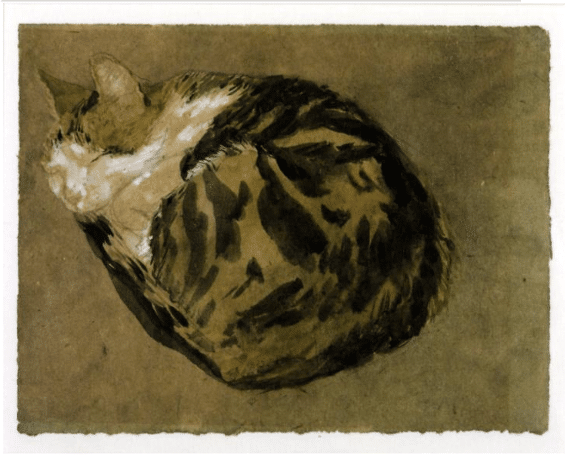
Gwen John, Cat, c.1904-8

